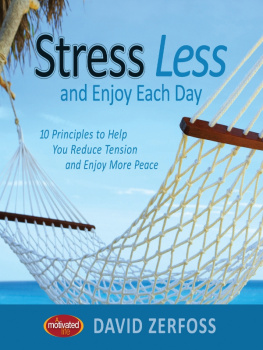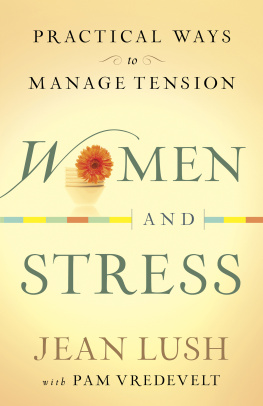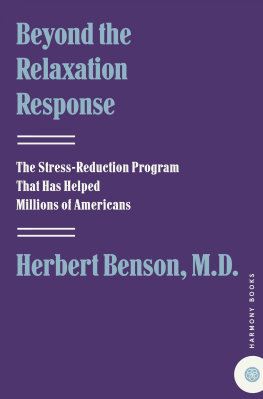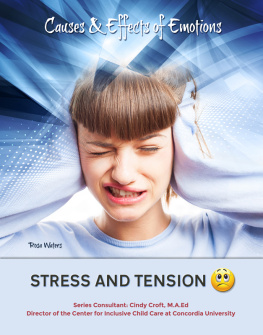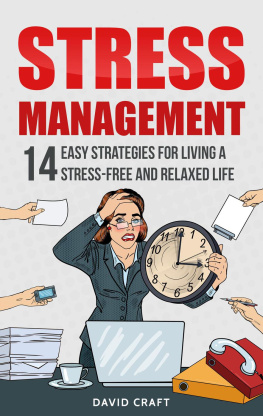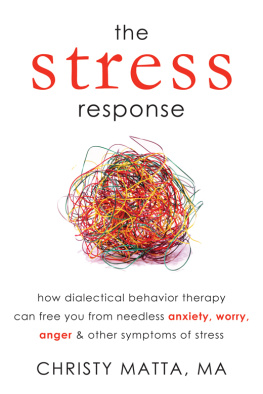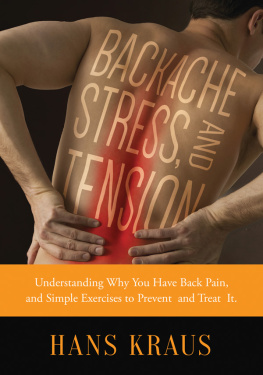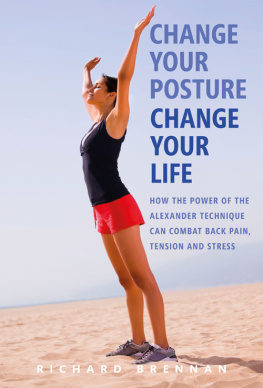SHAKE
IT
OFF
NATURALLY
REDUCE STRESS, ANXIETY,
AND TENSION WITH (TRE)
Copyright 2015 by Dr. David Berceli
All rights reserved
ISBN-13: 978-1515065289
All pictures and artwork in this book appear by permission of the respective individuals and artists. No part of this book may be reproduced, in any form, without written permission from the publishing company or David Berceli.
First Edition
Neither David Berceli nor TRE LLC is responsible for the content of any individual chapter from the contributing authors.
The model for the exercises illustrated in this book is: Jonas Nordstrm: jonas.nordstrom@minskadinstress.se www.tre-webinar.com
For information on TRE certification, training and certified TRE Providers go to: http://www.traumaprevention.com http://www.TREforAll.org
To view the TRE Video Library go to:
TRE Video Album: https://vimeo.com/album/2787696
TRE APP

An APP with videos, pictures and instructions on how to perform TRE is available. The name of the APP is: Stress Less TRE
Apple iPhone APP
https://itunes.apple.com/us/app/tre/id854933082?mt=8
Android Galaxy APP
https://play.google.com/store/apps/details?id=com.interbiz.ptsdhelp
CONTENTS
By: David Berceli, PhD
By: Erwin Schweitzer, PhD
By: Nkem Ndefo, RN
By: Riccardo Cassiani Ingoni, PhD
By: Frank Corrigan, MD & Gert Holstege, MD
By: David Berceli, PhD
By: Alex Greene, LMT
By: Klavs Tarp, BPT
By: Liza Kimble, LMT
By: Steve Haines, DC
By: Michael Nissen, CP
By: Eric B. Robins, MD
By: Jennica Mills, ERYT & Maria Alfaro, ERYT
By: Donna L. Phillips, BS, CYT, ERYT500
By: Heiner Steckel, Dipl. Pd.
By: David Berceli, PhD
By: Jessica Schaffer, LMT
By: David Berceli, PhD
By: Chris Balsley, LMT
By: Kal Jurdi, BS
By: Jonah Robins
By: Marcelo Amaral, MD
)
By: Marcelo Amaral, MD
By: Pedro Rojas, MS
)
By: Pedro Rojas, MS
By: Juan Carlos Garaizabal Jorge, CBT
)
By: Juan Carlos Garaizabal Jorge, CBT
By: Maria Vernica Sangr, ERYT
)
By: Maria Vernica Sangr, ERYT
By: Anya Bloom, PT
By: David Berceli, PhD
By: William Oster, MA & Susan Shifman, CPT

Foreward
By: Robert Scaer, M.D.
Stressful and traumatic events are by definition based on some perceived or real threat to life, and therefore have close associations with the basic response to survival, the fight/flight/freeze response. These responses, to a great extent, involve activation of the somatic musculature, and of both branches of the autonomic nervous system, sympathetic and parasympathetic. As a result, it has been recognized that the body is intimately incorporated into these procedural memories of defense and protection that may be linked to any stressful, threating, or traumatic experience. This linkage will involve not only the sensory perception of the experience, but also what the muscles of the body actually did to protect itself.

In any threatening experience, the neck muscles will pull the neck forward, the shoulder muscles will raise the shoulders and draw them inward, and the hip girdle muscles will flex the hip toward the abdomen and curve the spine, pulling the pelvis up toward the abdomen. All of these movements are hard-wired in the brains of all creatures for the purpose of drawing the body inward to protect the front of the neck, the chest and abdomen. This is known as the fetal response. It is the safest position of the human body and it replicates the position of the fetus.
However, even the adult response to a danger or threat is to repeat this position. The reason for this is that these are the areas that contain the most vulnerable parts of the body that the predator is most likely to attack. These patterns are instinctual and common to all mammals. They constitute the muscles that are activated in the startle response to any type of threat, including a loud, unexpected noise. And, interestingly, they also typify the postures of old age (in some people), chronic pain, depression and Parkinsons disease.

Through multiple dangerous experiences in numerous countries as a relief worker, Dr. Berceli intuitively recognized this universal somatic response to danger and therefore realized it was instinctual in all humans. With his expertise as a therapeutic body worker, he realized that there was a repetitive activation of very specific muscle patterns in threatening situations that could result in increasing tension in those specific muscle groups. He also surmised that releasing this specific tension pattern could have beneficial effects for relieving the stress and survival response.

Dr. Berceli postulated that these specific muscles must carry a great deal of excess tension simply because they are activated very often during stressful events. He began to explore the possibility of releasing the tension in this specific muscle pattern. However, since it was deeply imbedded in the core of the structure and activated through primitive autonomic reactions, it would require a different type of exercise routine than currently exists. He wondered if it was possible to fatigue, or inhibit the muscles that provided a counterweight to this muscle pattern, it might be possible to spontaneously release this tension, and discharge the anxiety similar to the somatic discharge that occurs after a freeze/dissociative response. Again relying on his knowledge of the intricate interaction of the pelvic and extremity muscles in normal function, he devised a series of fatiguing exercises in the lower extremities sufficient to elicit this discharge through a series of mild tremors. He found indeed, that not only did these clients achieve a sense of release, relaxation and calmness, but also that even emotional states from old trauma were often mitigated.
The uniqueness of the exercises in this book lies in the additional realization that Dr. Berceli had. He observed that the human body often tremors or shakes before, during or after stressful or dangerous situations. He recognized this shaking mechanism as inherent in the human body and was not part of the pathological expression of stress or trauma but was the response of the autonomic nervous system to down-regulate itself. It appeared as though the bodys shaking mechanism was able to release the corresponding muscular tension patterns created as a result of the stressor or threat and restore homeostasis. His operating hypothesis was that, if there are specific muscles of contraction during stressors, there must be a corresponding reaction from the body to reduce the stress in these specific muscles. Evolutionary wise, it would be inefficient for the musculature to contract during stressful or traumatic events without a corresponding mechanism to relieve the contraction after the stressor is over.
Next page
![David Berceli Shake It Off Naturally - Reduce Stress, Anxiety, and Tension With [TRE]](/uploads/posts/book/90259/thumbs/david-berceli-shake-it-off-naturally-reduce.jpg)
